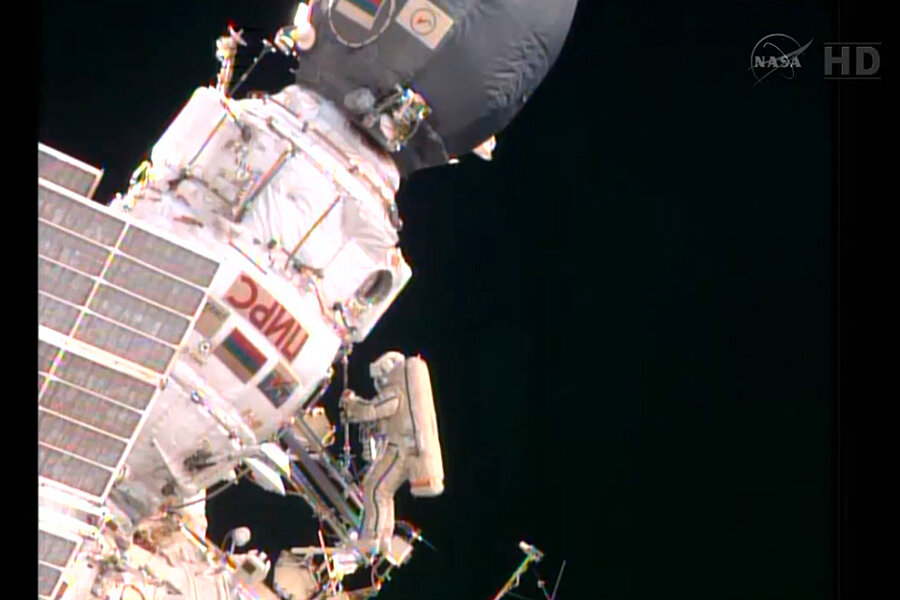Russian astronauts reinstall cameras on space station, run into glitch
Loading...
| Cape Canaveral, Fla.
Two Russian space station astronauts took a spacewalk Monday to complete a camera job left undone last month, but ran into new trouble.
Oleg Kotov and Sergey Ryazanskiy successfully installed one of two commercially provided cameras for Earth observations, a task requiring multiple power connections outside the International Space Station. Everything checked out well with this high-definition camera, unlike the post-Christmas spacewalk where there was no data stream.
But the second, medium-resolution camera did not provide good data to ground controllers after Monday's hookup.
Ryazanskiy redid the electrical connections — to no avail. He spotted no damage.
"I put everything in place as it used to be, maybe even better," Ryazanskiy radioed. "I think it's much better."
But still, the data link was flawed.
"Sergey, don't overdo it there," Russian Mission Control said, warning him not to damage the connectors.
The spacewalkers worked so hard — determined to accomplish the job this time — that Russian Mission Control outside Moscow urged them early in the spacewalk to "get your breath."
"We'll force ourselves to rest," one of the spacewalkers replied in Russian.
The astronauts had hooked up both Earth-observing cameras during a spacewalk right after Christmas. But ground controllers received no data from either camera, and the spacewalkers had to haul everything back in.
The problem was traced to indoor cabling and thought to be fixed.
Russian Mission Control ended Monday's spacewalk right around the six-hour mark, as originally planned. It was unclear what the next course of action would be regarding the incommunicado camera, but Kotov and Ryazanskiy were assured there would be no more spacewalks to deal with the problem.
"Well, at least one of them is working," one of them said.
All the external camera connections are believed to be solid, Russian Mission Control told the astronauts, and it was suggested that some files might be to blame.
The Canadian company that owns the two cameras, UrtheCast Corp., has a business plan to distribute the images collected. The cameras were launched to the space station last November in a deal between the Vancouver-based UrtheCast and the Russian Space Agency.
UrtheCast seeks to post near-real-time video on its website and sell images. The company envisions customers wanting video feeds for environmental, agricultural and humanitarian purposes.
The company had expected the system to be fully operational by summer.
Because of all the camera data trouble during the Dec. 27 spacewalk, which dragged on for eight hours, Kotov and Ryazanskiy had to put off other chores. Those tasks were completed Monday.
The four other space station astronauts — two Americans, one Japanese and another Russian — kept tabs on the spacewalk from inside.
Russian flight controllers outside Moscow directed Monday's 260-mile-high excursion.
Before going back inside, Kotov, the station's commander, was told to check out the orbiting outpost "as the master of the house."
"Let's take a picture for future generations," one of the spacewalkers said. And so they did.
Copyright 2014 The Associated Press. All rights reserved. This material may not be published, broadcast, rewritten or redistributed.







